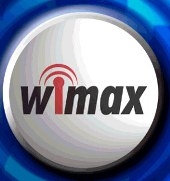 There is a lot of misinformation floating around when it comes to Worldwide Interoperability for Microwave Access technology, opines Siavash M Alamouti, Intel Fellow and Chief Technology Officer of the Mobility Wireless Group, Intel Corporation.
There is a lot of misinformation floating around when it comes to Worldwide Interoperability for Microwave Access technology, opines Siavash M Alamouti, Intel Fellow and Chief Technology Officer of the Mobility Wireless Group, Intel Corporation.
"Those who swear by competing technologies like 3G and LTE, say WiMAX (also known as a 4G technology) brings no value but this is not true. It's a proven technology," he says.
Alamouti's visit visit to India comes at a time when the government has fixed the reserve price for 3G spectrum at Rs 3,500 crore (Rs 35 billion) and Rs 1,750 crore (Rs 17.5 billion) for broadband wireless access spectrum. BWA spectrum is needed for Wimax-based services.
WiMAX is generally said to deliver 70 megabits per second over 50 kilometers but can either operate at higher bitrates or over longer distances.
"We will sharpen our focus on growth markets like India to offer WiMAX solutions for mobile devices and PCs. We may also invest in spectrum and operators (but unlike in countries like Sweden and Bangladesh -- where Intel has bid for spectrum directly to run WiMAX services with other partners --, the model in India will involve partnerships with telecom players. Intel, though, will not become a service provider to push WiMAX). Of course, we continue to be a chip player," says Alamouti.
The Iranian engineer is responsible for all wireless standards with a product roadmap at Intel -- the WiMAX Forum, IEEE 802.16, WiFi Alliance and IEEE 802.11.
He explain that had doubts over WiMAX been raised a few years back, they would have made sense 'but not a time when there are over 500 global installations of the technology'.
"WiMAX is an established technology," says the Intel Fellow who holds over 20 patents in the areas of wireless communications and wireless systems design. But why is WiMAX not being taken seriously? Alamouti says: "When we ask mobile operators (in India too), they tell us that LTE is on the cards so why go the WiMAX way? Now LTE is a long-term evolution project. But we're being told it's ready. How can that be? Being in the wireless field, I can see no such signs or successful deployments (there was only a recent trial in Norway)," he adds.
"3G technology was made for voice. It was not designed with the internet in mind," says Alamouti who is best known for the invention of the Alamouti space -- time block code (patented technique to improve data transfer).
"WiMAX, on the other hand, is designed for mobile broadband, and it's very affordable today. You can order a universal serial bus dongle from Amazon to have your device WiMAX-enabled if it has a USB port (which most devices have today) or you could have a WiMAX-enabled laptop (similar to Wi-Fi notebooks)," says Alamouti.
Many countries are viewing WiMAX as a way to introduce voice services to remote locations -- India, Africa, Eastern Europe and even rural areas in the US are now leading WiMAX adoption. "WiMAX is certainly a cheap way of delivering voice," says Infonetics analyst Richard Webb.
India is now the largest global opportunity for WiMAX, according to an Infonetics report, with remote US installations following next. Africa also leads WiMAX growth, and again voice plays a critical component.
Despite a lack of funding, Africa's 35 nations now have 80 WiMAX networks, according to Infonetics. Demand for voice and broadband are driving the upsurge in WiMAX connectivity, the research firm reports.
In India, many big operators including BSNL, Bharti Airtel and Reliance Communications have piloted WiMAX. The WiMAX Forum is optimistic, though. It pegs the user base at over 27.5 million users (around 19 million connections) by 2012.
The study predicts that around 70 per cent of WiMAX subscribers will use mobile and portable WiMAX devices to access broadband internet services by 2012. However, industry estimates peg the 3G users base at nearly 90 million during the same period.
ABI Research expects the total number of subscribers to be around 2 million in January 2010. Cases of successful implementation include Russia's Yota service, which broke 200,000 subscribers last month after five months of commercial operation and is on the way to being profitable.
Clearwire is another example with the likes of Intel and Google having invested in the company (around $2 billion was raised totally by Clearwire). Other countries include India, Pakistan, Bangladesh, Singapore, Malaysia, Korea, Taiwan and Japan.






